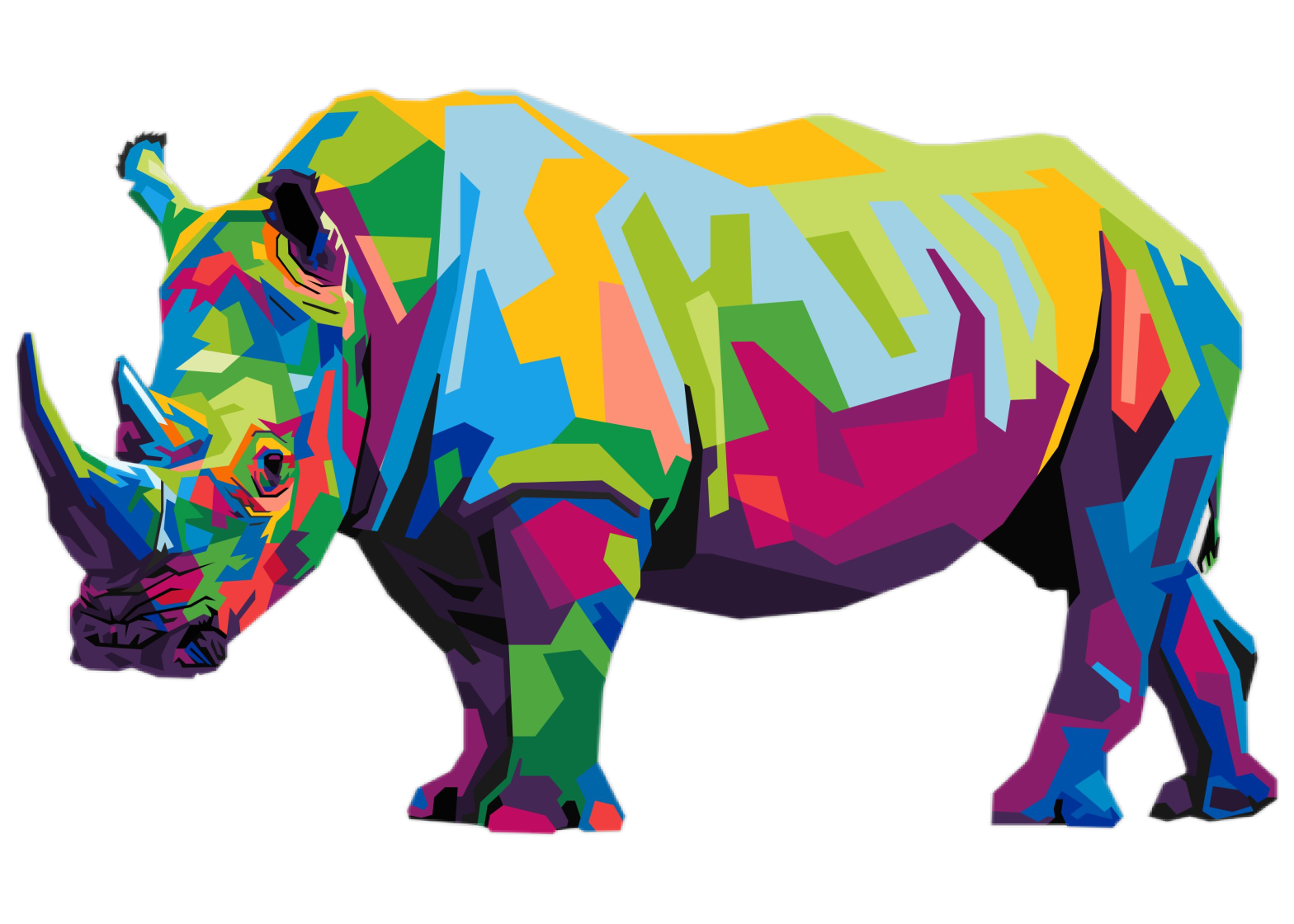A biomimicry project using rhinos as inspiration can spark off great ideas and provide insight into ways to solve tricky design problems. Biomimicry can be classifies at three levels: form, process and system. Rhino are ecosystem engineers and they can be used as inspiration for system biomimicry also called ecosystem biomimicry.
Let’s start with the rhino body! The form and structure of the rhino legs and feet has attracted lots of scientific interest.
How can a heavy rhino support itself on those stumpy and rather thin legs?
A rhino can weigh up to 3 600 kg and and their short legs flare out to larger pads with three rigid toes. Rhino put more pressure on the inside of their feet, while another large land animal, the elephant, puts more pressure on the outside. Elephants have five toes that point forwards which gives them tip-toed stance, while rhinos’ three toes are more evenly spread across their feet. g
Making a drawing of rhino legs and toes provide kids with important insights. Drawing is an important biomimicry tool. You can fill a biomimicry journal with drawings of rhinos. Adding elephant’s feet can also help to showcase the differences between two heavy land mammals. Talk about how we can use the information and insights we gain by looking at rhinos’ feet and legs. For example, we can design items that carry out heavy lifts.
How would you design a device that can move around while carry something heavy?


Rhino horns are amazing!
Developing self-healing is popular and fascinating! A self-healing material automatically repair damages to themselves – no need for humans to be involved. If you cut your finger, it will if you are lucky, heal itself within a week. But if you scratch the paint on your bicycle, you need to buy paint to repair it. Rhino horns can heal itself and we can learn about ways to develop self-healing materials by studying rhinos. Their horns are made of the same material as our nails.
Imagine all kinds of wonderful applications for self-healing materials. Bridges that repair their own cracks, paints and coating that can deal with the impact of different sort of weathers and can seal up scratches.

Rhinos’ skin is filled with patterns so it is perfect for a detailed drawing.
Kids can explore the benefits of a mud bath. Remi, the baby rhino in the story The Rhino In Me, takes a cooling mud bath. But a mud bath also help rhinos to get rid of parasites and it stop insects biting into their thick skin. The mud also provide the rhinos with sun protection.

Finally, we can take an ecobiomimicry perspective on our rhino project. In the previous blog post, we explored why rhinos are vital for a healthy ecosystem.
We need to change the way buildings and cities are designed to address biodiversity loss and climate change. Rather than simply designing solutions that minimise energy or water use, or the emission of pollutants, we need to take a wider perspective and look at how urban environments have an impact on climate and ecosystems.
Solutions and ideas based on observations of animals such as rhino can been lead to simple substitution of materials in buildings or technological things. Yet, studying nature can also help us to examine and re-evaluate urban environment. Taking a system perspective, ecobiomimicry, is perhaps more difficult. But as always, kids can come up with amazing and mind-blowing ideas if we let them play around, allow them time to ask questions, ponder and explore – vital ingredients for a creative approach to thinking.
What would a rhino inspired city look like? A city filled with building that are contributing to ecosystems and biodiversity. For example, grasses could be grown on the roof tops using grasses of different hights to support a wide variety of species.
Cannot wait to see your creations!
